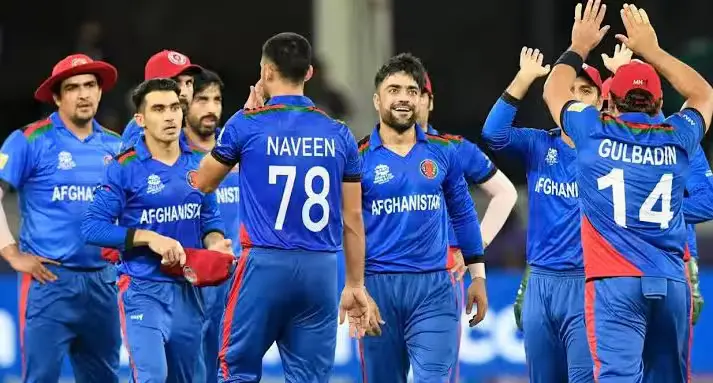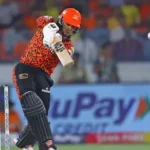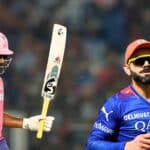Jarrod Kimber, Shayan Ahmad Khan
Afghanistan’s story in international cricket has been heartwarming for cricket fans. They made their first appearance in a major ICC tournament in the 2010 T20 World Cup, and won their first match in the 2014 edition. However, they failed to win a single game in the T20 World Cup in Australia in 2022.
They have made a few changes to their squad from that last edition. Mohammad Ishaq, Karim Janat, Nangeyalia Kharote, and Noor Ahmad make the cut, while Darwish Rasooli, Usman Ghani, Qais Ahmad and Mohammad Saleem Safi miss out.
Hazratullah Zazai had played one innings in the 2022 edition, but was ruled out because of an abdominal injury. He was replaced by Gulbadin Naib, who is also in the squad this time. Zazai is in the travelling reserves, along with Sediqullah Atal and Saleem Safi.
Before we start, it is worth noting that the average runs per over in all matches involving Afghanistan after the last T20 World Cup is only 7.57. All stats mentioned are for T20Is in this time period, unless specified otherwise. Therefore, the records for the players that will be discussed should be looked at with that lens.
Rahmanullah Gurbaz and Ibrahim Zadran are likely to be their opening pair. Gurbaz has scored 467 runs in 19 innings at an average of 25 and a strike rate of 137, while Ibrahim has 229 runs at an average of 45 but a strike rate of 116 while opening the batting for Afghanistan. The latter can also bat at three if required. However, his record is not as good there – 264 runs in 13 innings at an average of 22 and a strike rate of 103.
Their middle order comprises Najibullah Zadran, Naib, Ishaq, Azmatullah Omarzai, Karim Janat, and Mohammad Nabi. Naib has been the standout with 192 runs in nine innings at a strike rate of 140, and Nabi’s 423 runs in 17 innings while striking at 134 have also held up pretty well. Najibullah has batted in all positions from numbers four to eight, and scored 218 runs in 15 innings, averaging 27 at a strike rate of 118.
Wicketkeeper Ishaq made his T20I debut earlier this year. In four innings, he has scored 75 runs at a strike rate of 142 while batting twice at number five, and once each at four and seven. Omarzai and Janat have not had a lot of great performances with the bat, averaging 13 and 17 respectively in T20Is in this time frame.
They have six seam bowling options – Fazalhaq Farooqi, Naveen-ul-Haq, Fareed Ahmad are the three specialist bowlers, while Omarzai, Janat and Naib are allrounders.
Even though Omarzai is an allrounder, he has been the highest wicket-taker for Afghanistan in the format after the last T20 World Cup – 20 wickets at an economy of 8.26. He primarily bowls with the new ball, but he has also taken wickets in the middle and death.
Left-arm quick Farooqi has 16 wickets in 17 matches at an economy of 6.71. He can start the proceedings and close out games for the team. Fareed is another left-arm seamer who has done well in both these phases, picking up nine wickets in eight matches at 7.15 runs per over.
Naveen has been a part of the global T20 circuit, so his experience will be valuable in a major tournament. In T20Is, he has 15 wickets at an economy rate of 8.85. Much like the other seamers in the squad, he is also a new ball and death overs option.
Janat and Naib are not frontline options, having bowled less than an average of 10 balls per game for Afghanistan. But they could be useful in certain situations or against the right matchups.
Their spin department is the strongest part of their squad. They have the services of Rashid Khan, Mujeeb-ur-Rahman, Noor Ahmad, Nabi and Nangeyalia Kharote. In terms of variety, they have all types of spin covered.
Rashid has established himself as one of the greatest T20 spinners of all time. However, his form in this IPL – 10 wickets at an economy of 8.4 – was not that great. In T20Is, he has 16 wickets in 11 games at an economy of 4.9. The legspinner can bowl in all phases, but is a lot more effective in the middle overs and at the death. His Gujarat Titans teammate Noor also gets most of his wickets between overs 7 to 16. In the IPL, he took eight wickets at an economy of 8.33.
Mujeeb has taken nine wickets in nine matches, conceding 7.03 runs per over. He bowls a high percentage of his overs in the powerplay, and is also an option in the middle. Left-arm spinner Kharote has figures of 5 for 65 in 11 overs in his three-match T20I career, and 10 of those overs have been after the powerplay.
Nabi can also bowl when the field restrictions are on, but he does most of his work in the middle. He has taken nine wickets at an economy of 7.77, but he has bowled less than two overs per game.
Their most balanced XI would be: Gurbaz, Ibrahim Zadran, Naib, Najeebullah Zadran, Ishaq, Omarzai, Nabi, Rashid, Noor or Mujeeb, and two from among Naveen, Fareed and Farooqi.
If they want to strengthen their bowling, Rashid could bat at number seven so that they can play the extra bowler instead of Ishaq. If they want to go spin-heavy, both Noor and Mujeeb could play alongside two frontline seamers. On a pace-friendly surface, all three of Naveen, Fareed and Farooqi can start.
Because they have several allrounders in their squad, they also bat deep. The combination in such a case would be: Gurbaz, Ibrahim Zadran, Naib, Najeebullah Zadran, Omarzai, Nabi, Janat or Kharote, Rashid, Noor or Mujeeb, and one of Naveen, Fareed or Farooqi.
With Rashid slotting in at number nine, it could free up the rest of the batters to go hard from the start and not let up. In addition, they can get eight overs out of Nabi, Omarzai, Janat or Kharote, and Naib.
Afghanistan have a high-quality spin attack that can change games if the pitches suit them. They also have variety in their seam bowling options. Their batters are talented, but they are not yet as destructive as some of the other teams. Their fans will hope they are a level above what they were in the ODI World Cup, which was their best performance in a major ICC men’s tournament so far. They are not quite favourites, but can definitely be giant-killers.




